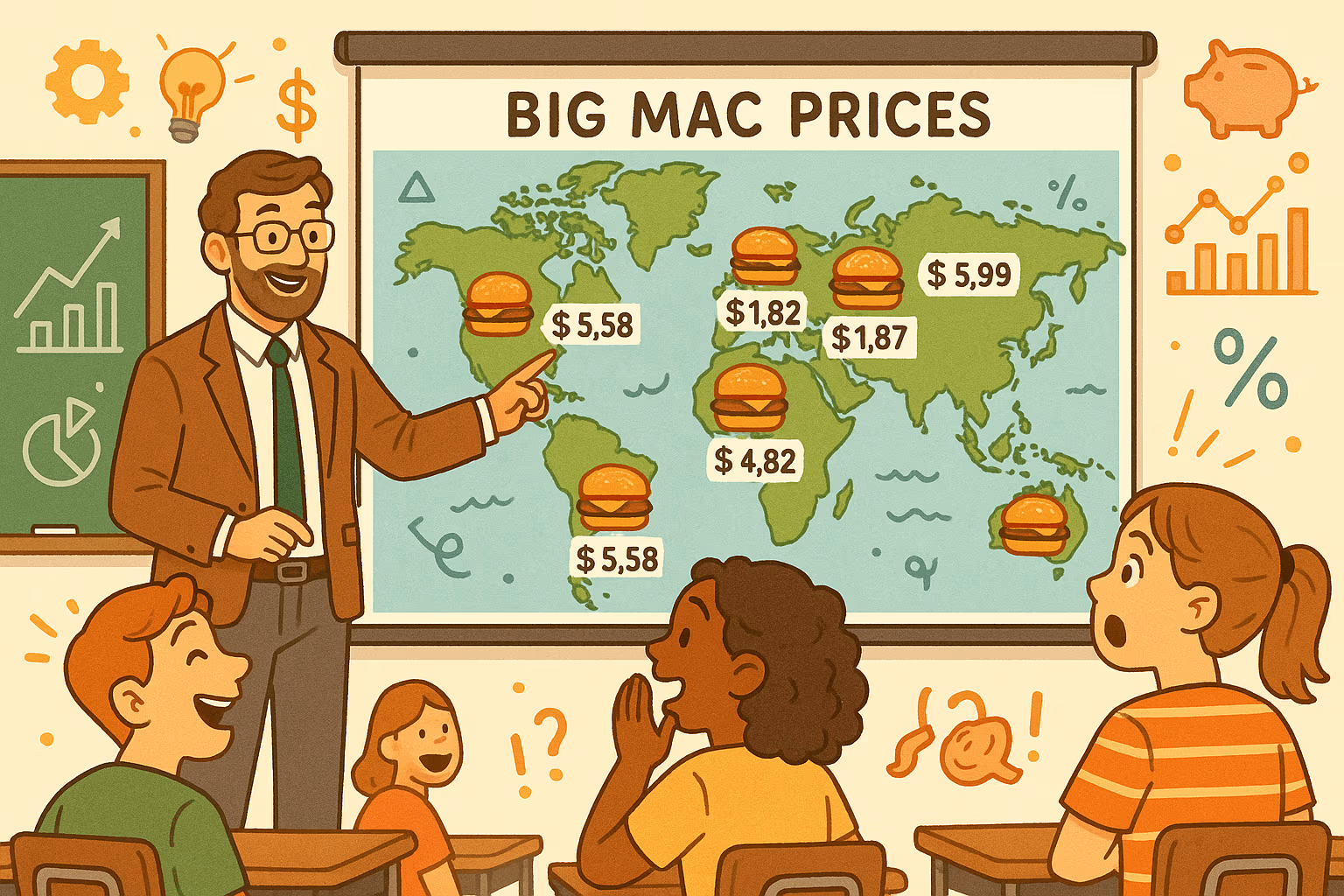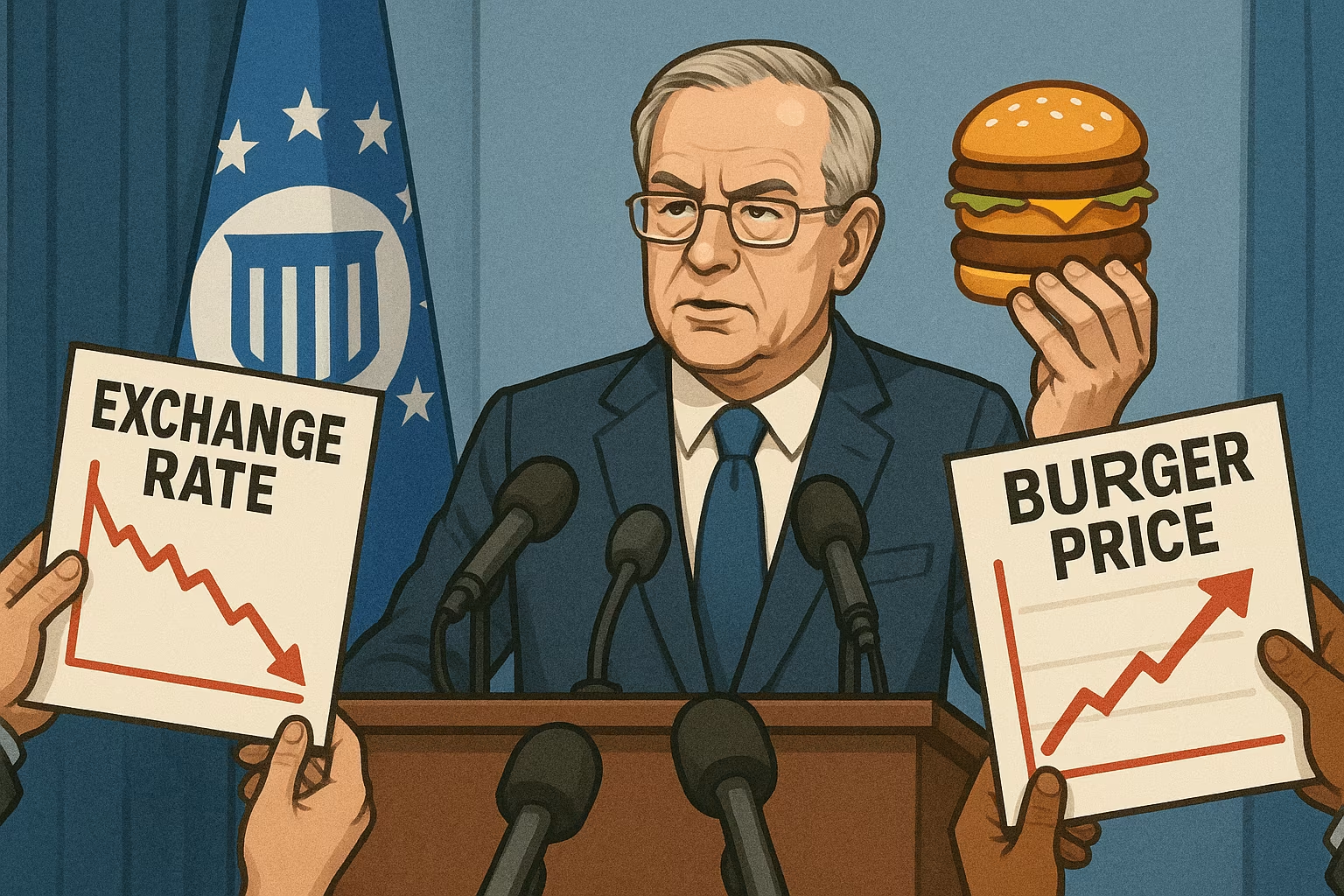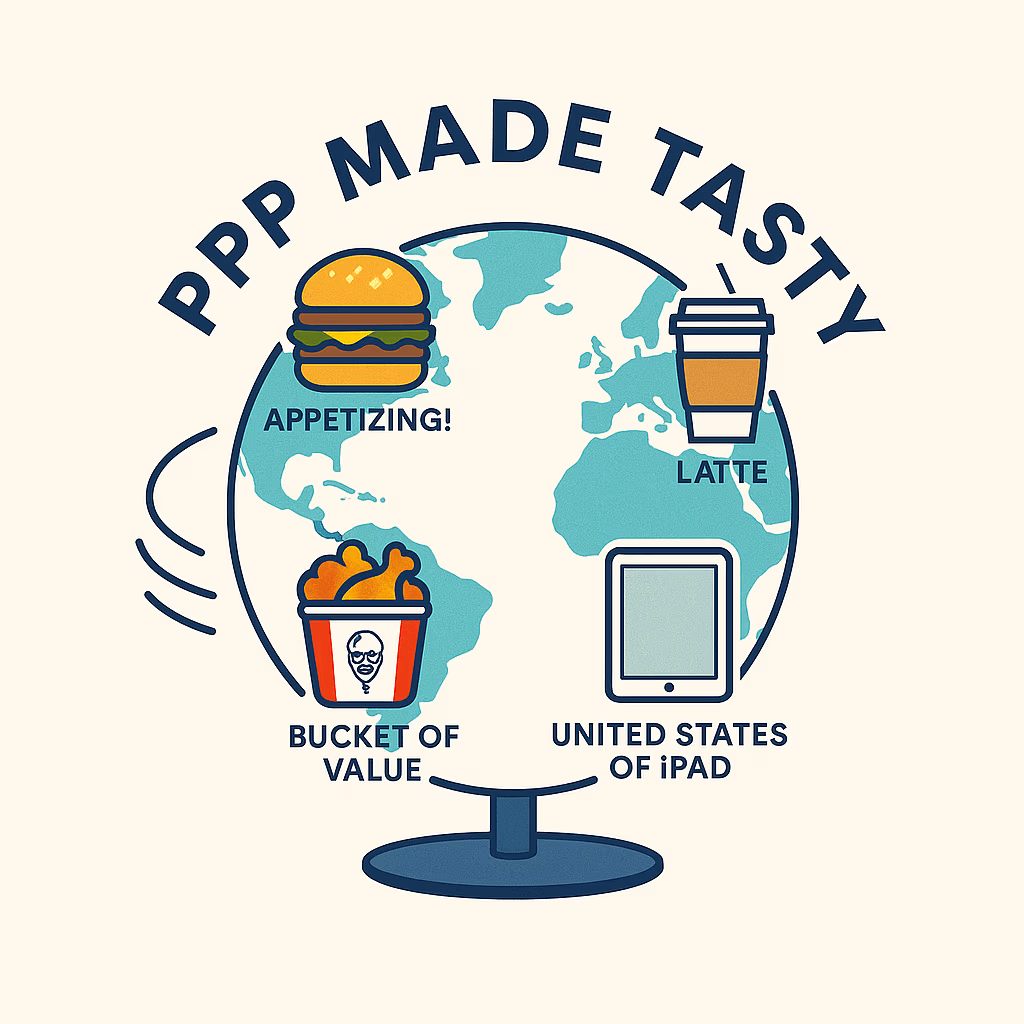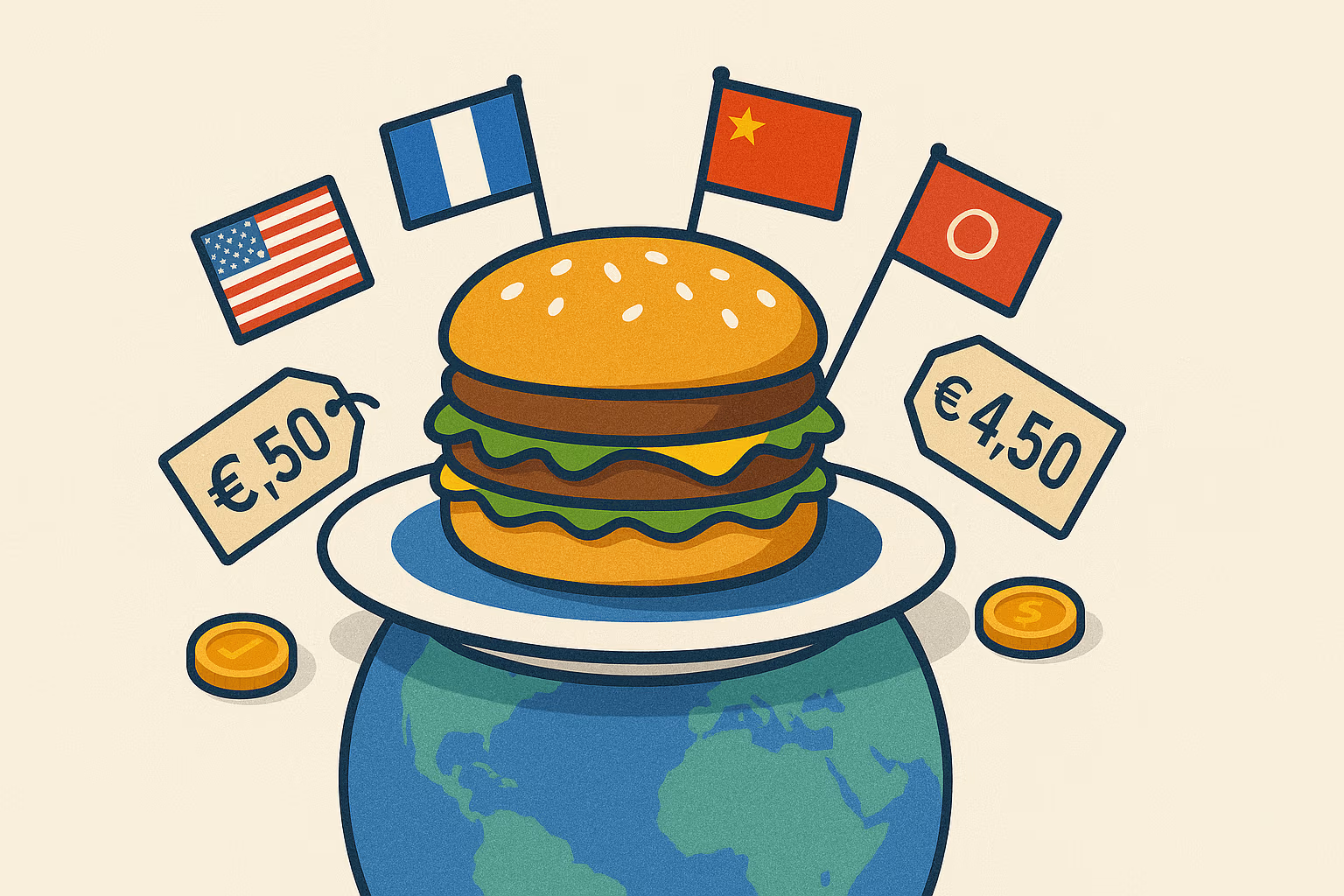Explore how the Big Mac Index is used as a powerful yet playful tool across education, media, and economic discourse to visualize currency valuation.
Practical Applications of the Big Mac Index
Educational Use in Economics Teaching
The Big Mac Index is a staple in economics classrooms worldwide, praised for its simplicity and relatability. Instead of introducing Purchasing Power Parity (PPP) with abstract formulas, educators frame the discussion with something every student understands: the price of a burger.
A common classroom prompt might be:
“Why does a Big Mac cost $2.30 in Taiwan but over $8 in Switzerland?”
This sparks conversations on:
- Currency valuation and misalignment
- Local wage levels and cost of living
- Inflation and exchange rate policies
Its quirky nature—dubbed “burgernomics”—sticks in students’ minds, turning complex international finance into an engaging, digestible concept.

Usage by Journalists and Media for Currency Discussions
Twice a year, The Economist publishes the latest Big Mac Index rankings, and media outlets across the globe jump on the opportunity. Why? Because it’s:
- Visually intuitive
- Data-driven yet informal
- A headline goldmine
Sample headlines include:
- “Swiss Franc Overvalued by 38%, Says Big Mac Index”
- “Emerging Market Currencies Remain Undervalued on Burger Benchmark”
It’s especially useful during periods of exchange rate volatility or trade debates. For example, during discussions around Chinese currency manipulation in the 2010s, the Big Mac Index was often cited as casual “evidence” of misalignment.

Humorous Yet Insightful Applications by Policymakers and Investors
Although no central banker makes decisions based on burger prices, the Big Mac Index does make its way into interviews and economic commentary.
- Finance ministers are occasionally asked, “Your currency is 40% undervalued on the Big Mac Index—what’s your response?”
- IMF discussions might casually refer to it when assessing local price levels versus exchange rates.
- Investment analysts use it to highlight undervalued currencies with long-term appreciation potential, especially the GDP-adjusted version, which correlates more closely with real currency movements.
It’s also seen in corporate contexts—companies have used Big Mac prices to estimate relative cost of living when setting employee travel stipends or per diems.

A Platform for Spin-Off Indices and Public Engagement
The cultural success of the Big Mac Index has inspired numerous spinoffs—some humorous, some with genuine insights:
- The Tall Latte Index (Starbucks prices worldwide)
- The KFC Index (focused on African economies)
- The iPad Index (highlighting global tech price disparities)
These indices all follow the same principle: comparing standardized, globally available products to evaluate PPP and cost-of-living variations.
Their popularity underscores how creative tools can communicate economic realities in ways the public actually enjoys engaging with.

Closing Thought
While the Big Mac Index may have started as a joke, its applications have proven anything but laughable. It’s found a lasting place at the intersection of economics, education, journalism, and public curiosity. As one analyst aptly put it:
“Think of it more like a conversation starter than a crystal ball.”
And for all its simplicity, it reminds us that global economics doesn't always have to be dry—even a fast-food burger can be a powerful lens into how the world works.

Share this article
More Articles
Introduction to the Big Mac Index
Discover how the Big Mac Index became an iconic and accessible economic indicator, explaining global purchasing power parity in simple terms.
Big Mac Index Case Studies
Explore detailed case studies of countries with notable currency misalignments, and understand how the Big Mac Index reflects deeper economic policies and challenges.